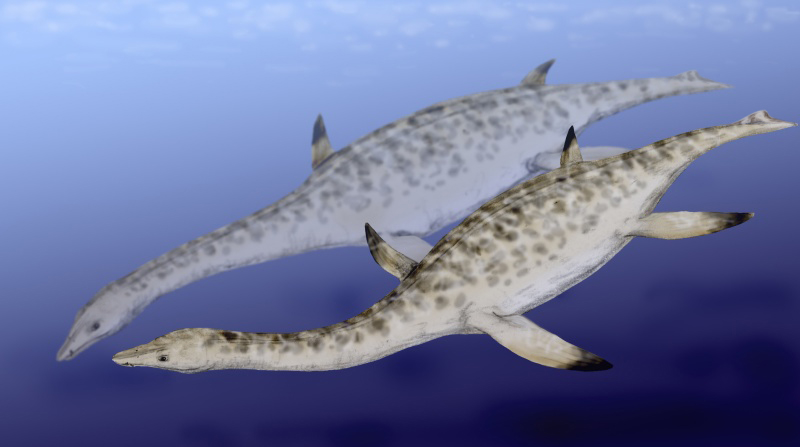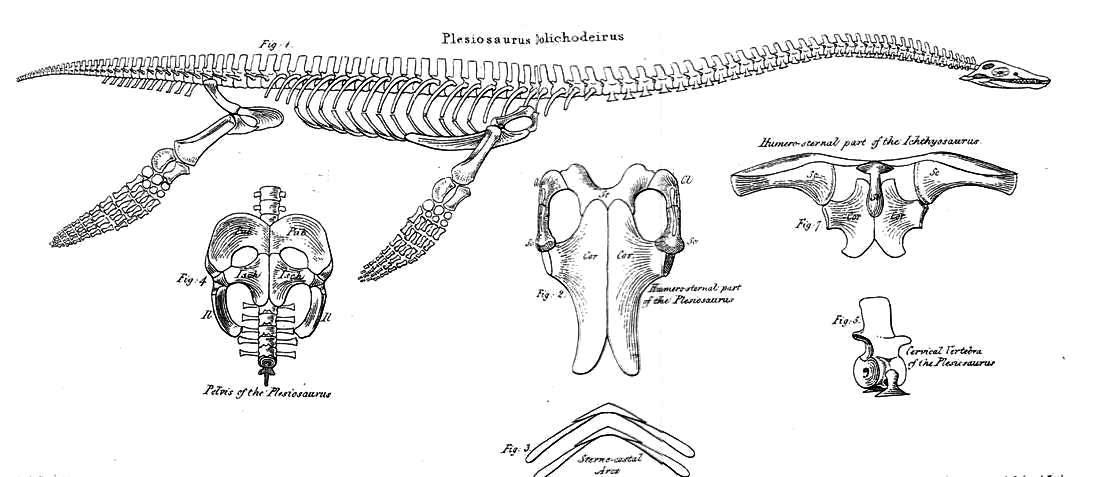|
Leptocleididae
Leptocleididae is a family of small-sized plesiosaurs that lived during the Early Cretaceous period (early Berriasian to early Albian stage). They had small bodies with small heads and short necks. ''Leptocleidus'' and '' Umoonasaurus'' had round bodies and triangle-shaped heads. Leptocleidids have been found in what were shallow nearshore, freshwater and brackish habitats. Hilary F. Ketchum and Roger B. J. Benson (2010), transferred ''Brancasaurus'', ''Kaiwhekea'', '' Nichollssaura'' and ''Thililua ''Thililua'' is a genus of polycotylid plesiosaur, containing one species, ''T. longicollis''. Discovery The name ''Thililua'' is derived from that of an ancient aquatic god from local Berber mythology; ''longicollis'' refers to the animal's ...'' to this family. However, Ketchum and Benson (2011) reassigned ''Kaiwhekea'' and ''Thililua'' to their original positions, as an elasmosaurid and a polycotylid, respectively. Phylogeny Cladogram based on Ketchum and Benson (2011): ... [...More Info...] [...Related Items...] OR: [Wikipedia] [Google] [Baidu] |
Brancasaurus
''Brancasaurus'' (meaning "Branca's lizard") is a genus of plesiosaur which lived in a freshwater lake in the Early Cretaceous of what is now North Rhine-Westphalia, Germany. With a long neck possessing vertebrae bearing distinctively-shaped "shark fin"-shaped neural spines, and a relatively small and pointed head, ''Brancasaurus'' is superficially similar to ''Elasmosaurus'', albeit smaller in size at in length as a subadult. The type species of this genus is ''Brancasaurus brancai'', first named by Theodor Wegner in 1914 in honor of German paleontologist Wilhelm von Branca. Another plesiosaur named from the same region, ''Gronausaurus wegneri'', most likely represents a synonym of this genus. While traditionally considered as a basal member of the Elasmosauridae, ''Brancasaurus'' has more recently been recovered as a member, or close relative, of the Leptocleididae, a group containing many other freshwater plesiosaurs. Description ''Brancasaurus'' was a medium-sized plesiosa ... [...More Info...] [...Related Items...] OR: [Wikipedia] [Google] [Baidu] |
Umoonasaurus
''Umoonasaurus'' is an extinct genus of plesiosaur belonging to the family Leptocleididae. This genus lived approximately 115 million years ago during the Late Cretaceous period ( Aptian-Albian stages), in shallow seas covering parts of what is now Australia. It was a relatively small animal around long. An identifying trait of ''Umoonasaurus'' is three crest-ridges on its skull. Discovery and naming The holotype of ''Umoonasaurus demoscyllus'' is AM F99374, an opalized skeleton that has been nicknamed "Eric". It was discovered in the Zorba Extension Opal Field near the town of Coober Pedy, and is very well preserved, representing the most complete opalized fossil of a vertebrate known. Other specimens have also been referred to this species. SAM P2381, discovered in the Andamooka opal fields, is another opalized specimen. SAM 31050 was discovered in the Curdimurka area near Lake Eyre, and SAM P410550, a juvenile specimen, comes from the Neales River region, near the town ... [...More Info...] [...Related Items...] OR: [Wikipedia] [Google] [Baidu] |
Plesiosaur
The Plesiosauria (; Greek: πλησίος, ''plesios'', meaning "near to" and ''sauros'', meaning "lizard") or plesiosaurs are an order or clade of extinct Mesozoic marine reptiles, belonging to the Sauropterygia. Plesiosaurs first appeared in the latest Triassic Period, possibly in the Rhaetian stage, about 203 million years ago. They became especially common during the Jurassic Period, thriving until their disappearance due to the Cretaceous–Paleogene extinction event at the end of the Cretaceous Period, about 66 million years ago. They had a worldwide oceanic distribution, and some species at least partly inhabited freshwater environments. Plesiosaurs were among the first fossil reptiles discovered. In the beginning of the nineteenth century, scientists realised how distinctive their build was and they were named as a separate order in 1835. The first plesiosaurian genus, the eponymous ''Plesiosaurus'', was named in 1821. Since then, more than a hundred valid ... [...More Info...] [...Related Items...] OR: [Wikipedia] [Google] [Baidu] |
Nichollssaura
''Nichollssaura'' is an extinct genus of leptocleidid plesiosaur from the Early Cretaceous Boreal Sea of North America. The type species is ''N. borealis'', found in the early Albian age Clearwater Formation near Fort McMurray, Alberta, Canada. ''Nichollssaura'' was a small plesiosaur, reaching in length and in body mass. It fills an approximate 40-million-year gap in the fossil record of North American plesiosaurs. The type specimen was discovered in one of Syncrude Canada Ltd.'s open-pit oilsand mines near Fort McMurray, Alberta, in 1994. The fossil is on display at the Royal Tyrrell Museum of Palaeontology, missing only the left forelimb and scapula, lost when the specimen was discovered accidentally by 100-ton electric shovel operators Greg Fisher and Lorne Cundal. Etymology The fossil, named after paleontological curator Dr. Betsy Nicholls, originally was named ''Nichollsia borealis'' but ''Nichollsia'' was already in use (preoccupied) by a genus of isopods. T ... [...More Info...] [...Related Items...] OR: [Wikipedia] [Google] [Baidu] |
Leptocleidus
''Leptocleidus'' is an extinct genus of plesiosaur, belonging to the family Leptocleididae.Smith AS, Dyke GJ. 2008. The skull of the giant predatory pliosaur ''Rhomaleosaurus cramptoni'': implications for plesiosaur phylogenetics. ''Naturwissenschaften'' e-published 2008. It was a small plesiosaur, measuring only up to . Discovery In short, the term ''Leptocleidus'' means "slender clavicle". It comes from a merge of the Greek words ''λεπτοσ'', meaning "slender" and ''κλειδ'' (also spelled ''κλεισ'') meaning clavicle. ''Leptocleidus'' is known from the following sediments: *''L. capensis'' is known from the Sundays River Formation (Valanginian age), Cape Province, South Africa. *''L. clemai'' found near Kalbarri in the Carnarvon Basin (Hauterivian-Barremian age) Western Australia. *''L. superstes'' is known from the Upper Weald Clay (Barremian age), Sussex, England. A specimen from the Vectis Formation (lower Aptian age), Isle of Wight, found in 1995 and see ... [...More Info...] [...Related Items...] OR: [Wikipedia] [Google] [Baidu] |
Plesiosaurs
The Plesiosauria (; Greek: πλησίος, ''plesios'', meaning "near to" and ''sauros'', meaning "lizard") or plesiosaurs are an order or clade of extinct Mesozoic marine reptiles, belonging to the Sauropterygia. Plesiosaurs first appeared in the latest Triassic Period, possibly in the Rhaetian stage, about 203 million years ago. They became especially common during the Jurassic Period, thriving until their disappearance due to the Cretaceous–Paleogene extinction event at the end of the Cretaceous Period, about 66 million years ago. They had a worldwide oceanic distribution, and some species at least partly inhabited freshwater environments. Plesiosaurs were among the first fossil reptiles discovered. In the beginning of the nineteenth century, scientists realised how distinctive their build was and they were named as a separate order in 1835. The first plesiosaurian genus, the eponymous ''Plesiosaurus'', was named in 1821. Since then, more than a hundred valid s ... [...More Info...] [...Related Items...] OR: [Wikipedia] [Google] [Baidu] |
Thililua
''Thililua'' is a genus of polycotylid plesiosaur, containing one species, ''T. longicollis''. Discovery The name ''Thililua'' is derived from that of an ancient aquatic god from local Berber mythology; ''longicollis'' refers to the animal's long neck. ''Thililua'' has been found in Late Cretaceous (early Turonian) rocks in the High Atlas mountains of Morocco in north Africa. ''Thililua'' is the first Polycotylid plesiosaur discovered in Africa, and also the first discovered that lived at a subtropical latitude. In 2010, ''Thililua'' was transferred to Leptocleididae as a sister taxon to ''Nichollssaura''. Description The type specimen of ''T. longicollis'', which was described in 2003, consists of an almost complete skull and lower jaw, articulated with 37 vertebrae. Of these vertebrae, 30 were cervical (neck) vertebrae, which is an unusually high number compared to other Polycotylids, such as ''Dolichorhynchops'', which had only 19 neck vertebrae, and ''Polycotylus'', which h ... [...More Info...] [...Related Items...] OR: [Wikipedia] [Google] [Baidu] |
Hastanectes
''Hastanectes'' is an extinct genus of a plesiosaurian with possible pliosaurid affinities known from the Early Cretaceous Wadhurst Clay Formation (Valanginian stage) of the United Kingdom. It contains a single species, ''Hastanectes valdensis'', which was originally thought to be a species of ''Cimoliasaurus''. See also * List of plesiosaur genera * Timeline of plesiosaur research This timeline of plesiosaur research is a chronologically ordered list of important fossil discoveries, controversies of interpretation, taxonomic revisions, and cultural portrayals of plesiosaurs, an order of marine reptiles that flourished duri ... References Early Cretaceous plesiosaurs of Europe Fossil taxa described in 2012 Fossils of Great Britain Taxa named by Darren Naish Sauropterygian genera {{plesiosaur-stub ... [...More Info...] [...Related Items...] OR: [Wikipedia] [Google] [Baidu] |
Vectocleidus
''Vectocleidus'' is an extinct genus of leptocleidid plesiosaurian known from the Early Cretaceous Vectis Formation (late Barremian stage) of Isle of Wight, in the United Kingdom. It contains a single species, ''Vectocleidus pastorum''. It measures in length and in body mass. See also * List of plesiosaur genera * Timeline of plesiosaur research This timeline of plesiosaur research is a chronologically ordered list of important fossil discoveries, controversies of interpretation, taxonomic revisions, and cultural portrayals of plesiosaurs, an order of marine reptiles that flourished duri ... References Early Cretaceous plesiosaurs of Europe Fossil taxa described in 2012 Taxa named by Darren Naish Sauropterygian genera Plesiosaurs {{plesiosaur-stub ... [...More Info...] [...Related Items...] OR: [Wikipedia] [Google] [Baidu] |
Kaiwhekea
''Kaiwhekea'' () is an extinct genus of plesiosaur from the Late Cretaceous (Maastrichtian age) of what is now New Zealand. History of discovery The type species, ''Kaiwhekea katiki'', was first described by Arthur Cruickshank and Ewan Fordyce in 2002. ''Kaiwhekea'' was approximately long and weighed in body mass. It lived around the middle Maastrichtian. The single known specimen, found in the Katiki Formation near Shag Point on the coast of Otago, is nearly complete, and is on display at the Otago Museum in Dunedin, New Zealand. Classification ''Kaiwhekea'' has been placed as an aristonectine plesiosaur close to ''Aristonectes'' (O'Keefe and Street, 2009). In 2010, ''Kaiwhekea'' was transferred to Leptocleididae, but more recent analyses do not find the same result. The following cladogram shows the placement of ''Kaiwhekea'' within Elasmosauridae following an analysis by Rodrigo A. Otero, 2016: See also * List of plesiosaur genera * Timeline of plesiosaur research ... [...More Info...] [...Related Items...] OR: [Wikipedia] [Google] [Baidu] |
Berriasian First Appearances
In the geological timescale, the Berriasian is an age/stage of the Early/Lower Cretaceous. It is the oldest subdivision in the entire Cretaceous. It has been taken to span the time between 145.0 ± 4.0 Ma and 139.8 ± 3.0 Ma (million years ago). The Berriasian succeeds the Tithonian (part of the Jurassic) and precedes the Valanginian. Stratigraphic definition The Berriasian Stage was introduced in scientific literature by Henri Coquand in 1869. It is named after the village of Berrias in the Ardèche department of France. The largely non-marine English Purbeck Formation is in part of Berriasian age.In fact, the first rocks to be described of this age were the beds of the English Purbeck Formation, named as the Purbeckian by Alexandre Brongniart in 1829 following description by Henry De la Beche, William Buckland, Thomas Webster and William Henry Fitton. The base of the Berriasian, which is also the base of the Cretaceous System, has traditionally been placed at the first app ... [...More Info...] [...Related Items...] OR: [Wikipedia] [Google] [Baidu] |
Early Cretaceous Plesiosaurs
{{disambiguation, geo ...
Early may refer to: History * The beginning or oldest part of a defined historical period, as opposed to middle or late periods, e.g.: ** Early Christianity ** Early modern Europe Places in the United States * Early, Iowa * Early, Texas * Early Branch, a stream in Missouri * Early County, Georgia Other uses * ''Early'' (Scritti Politti album), 2005 * ''Early'' (A Certain Ratio album), 2002 * Early (name) * Early effect, an effect in transistor physics * Early Records, a record label * the early part of the morning See also * Earley (other) Earley is a town in England. Earley may also refer to: * Earley (surname), a list of people with the surname Earley * Earley (given name), a variant of the given name Earlene * Earley Lake, a lake in Minnesota *Earley parser, an algorithm *Earley ... [...More Info...] [...Related Items...] OR: [Wikipedia] [Google] [Baidu] |






